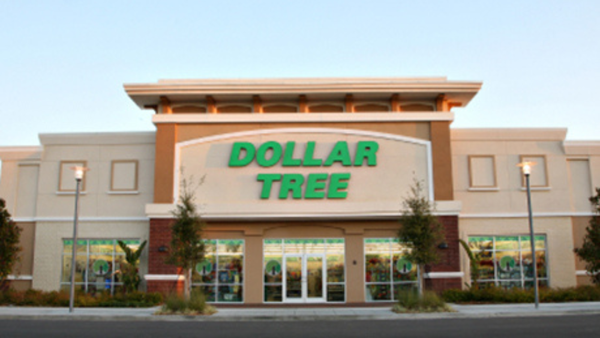
Would you eat lab-grown chocolate?
I requested a sample from California Cultured, a Sacramento-based company. Its chocolate, not yet commercially available, is made with techniques that have previously been used to synthesize other bioactive products like certain plant-derived pharmaceuticals for commercial sale.
A few days later, it arrives. The morsel, barely bigger than a coffee bean, is supposed to be the flavor equivalent of a 70%-80% dark chocolate. I tear open its sealed packet and a chocolatey aroma escapes – so far, so good. I pop it in my mouth.
Slightly waxy and distinctly bitter, it boasts those bright, fruity dark chocolate notes. I’m no expert, but I enjoyed it – and found it basically indistinguishable from regular dark chocolate.
Globally, humans consume more than 7m metric tons of chocolate per year, and our appetite is only growing. In the US, chocolate demand surges in October in advance of Halloween; the National Retail Federation estimated a $3.9bn US spend on Halloween candy this year, with chocolate options like Reese’s Peanut Butter Cups and M&Ms dominating.
But the chocolate market has grown volatile in recent years. Cacao trees – which provide chocolate’s essential ingredient – are particularly vulnerable to drought and disease. Additionally, unpredictable weather related to the climate crisis has caused production shortfalls and inconsistent harvests in key chocolate-producing regions in west Africa.
Chocolate prices reached a historic high of $12,000 per metric ton in 2024, though the rising costs have not truly deterred consumers, explains Bloomberg Intelligence market analyst Ignacio Canals Polo.
Big confectionery companies like Mondelez, Mars and Nestlé are most heavily affected by price hikes. Canals Polo says they are “trying to adjust their portfolios to rely less on cocoa” by “shrinkflating” their products; reformulating recipes to use cheaper ingredients, such as vegetable oil instead of cocoa butter; and promoting non-chocolate confections, like biscuits, gummy candy or chocolate-free spins on classic products – think KitKats enrobed in flavored cream coatings.
This volatility represents an opportunity for the lab-grown product. California Cultured takes cuttings from regular cacao plants and cultivates the cells on plates containing a nutrient-rich medium made mostly of sugar and plant extracts. The company then grows specific cell types, such as those that produce cocoa butter or cocoa flavanols, explains Alan Perlstein, the company’s CEO. After that comes harvesting, fermenting, drying, milling and packaging the product into, functionally, a lab-grown cocoa powder to be used in confections like bars and drinks.
Other companies, such as Nukoko and ChoViva, are developing chocolate alternatives made from ingredients including fermented fava beans or sunflower seeds. Scientists are experimenting with chocolate made from ground cacao husks typically discarded in the conventional chocolate-making process.
California Cultured is still waiting on Food and Drug Administration approval to launch its chocolate to market. But it has established its first commercial partnership with the Japanese confectionery company Meiji, which makes Hello Panda and Chocorooms. Perlstein says California Cultured’s processes can facilitate “more interesting flavors, aromas or experiences”.
Initially, lab-grown chocolate may be more expensive, but Perlstein hopes the price difference will disappear within three years of becoming available. If scaling these processes up is feasible, Americans could be seeing chocolate products with a “lab-grown” designation on shelves as soon as next Halloween. But will people buy them?
“I think in certain niche sectors, like tech, it’s going to be very, very cool to be like, ‘It’s lab-grown chocolate – you can have more control, you can geek out on the very fine nuances,’” says Eagranie Yuh, a former chocolatier and chocolate educator. But Yuh also thinks “most people have a visceral response” to the idea of lab-grown food. A 2023 German survey of 727 people found that food‑technology neophobia – a fear of the new – strongly influenced attitudes about lab-grown meat, though even the wary were at least willing to try it.
Emphasizing adjustments to chocolate, such as tweaked levels of caffeine and health-supporting polyphenols, also adds “a rational element to what is a largely an emotionally driven product”, says Yuh. “Chocolate is very human.”
For instance, we commonly prefer the tasty but lower-quality bars of our youth. Yuh says the human narrative behind products can also be important for chocolate consumers, such as knowing that ingredients were responsibly grown and processed by people who were fairly paid.
It’s unclear how consumers will react to lab-grown products or when they will become available. But chocolate lovers will probably face questions of cost – financial, ecological and ethical.
There could be ecological benefits to lab-grown chocolate. Cacao trees are often farmed on deforested land, degrading soil and requiring heavy doses of fertilizer and pesticides. But “the socioeconomic consequences of rolling out [lab-grown chocolate] at large scale could be huge for the smallholder farmers in West Africa”, who rely on cacao sales for their livelihood, says Sophia Carodenuto, a political geographer specializing in global food systems at the University of Victoria.
“Lab-grown chocolate may be innovative, but it can’t replace the heritage, livelihoods and soul behind real cocoa,” says Shirley Temeng-Asomaning, founder and CEO of Chocolate Mall, a Ghana-based confectionery company. “My hope is that science will complement and not compete with the farmers who built this industry, and that technology helps make chocolate more sustainable, not less human.”
For his part, Perlstein believes the demand for chocolate is “infinite” – and big enough to support new players.
“The demands of cocoa are just so ravenous – even if every single cocoa farmer were to expand production constantly year after year, which would be impossible, there would still be a huge demand,” he says, citing the growth of newer chocolate-consuming markets such as China, India and Africa.
Demand may exist, Carodenuto says, but “what is needed is for the market to pay more for ethical and ecologically sustainable cocoa”.







